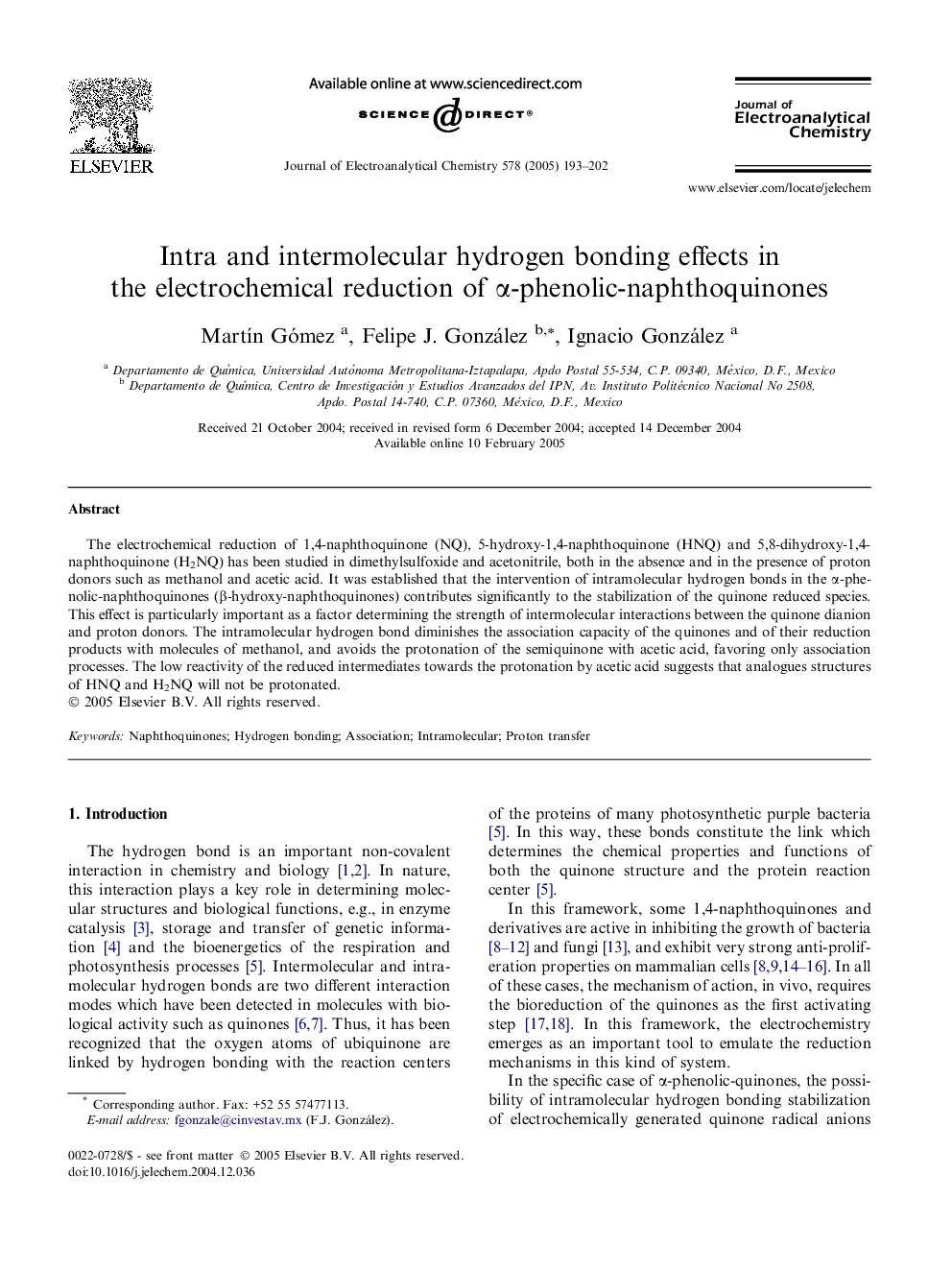| Article ID | Journal | Published Year | Pages | File Type |
|---|---|---|---|---|
| 10276136 | Journal of Electroanalytical Chemistry | 2005 | 10 Pages |
Abstract
The electrochemical reduction of 1,4-naphthoquinone (NQ), 5-hydroxy-1,4-naphthoquinone (HNQ) and 5,8-dihydroxy-1,4-naphthoquinone (H2NQ) has been studied in dimethylsulfoxide and acetonitrile, both in the absence and in the presence of proton donors such as methanol and acetic acid. It was established that the intervention of intramolecular hydrogen bonds in the α-phenolic-naphthoquinones (β-hydroxy-naphthoquinones) contributes significantly to the stabilization of the quinone reduced species. This effect is particularly important as a factor determining the strength of intermolecular interactions between the quinone dianion and proton donors. The intramolecular hydrogen bond diminishes the association capacity of the quinones and of their reduction products with molecules of methanol, and avoids the protonation of the semiquinone with acetic acid, favoring only association processes. The low reactivity of the reduced intermediates towards the protonation by acetic acid suggests that analogues structures of HNQ and H2NQ will not be protonated.
Related Topics
Physical Sciences and Engineering
Chemical Engineering
Chemical Engineering (General)
Authors
MartÃn Gómez, Felipe J. González, Ignacio González,
